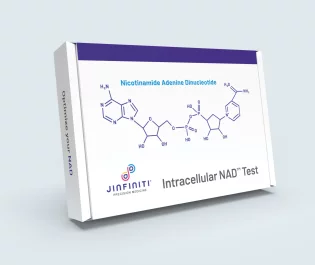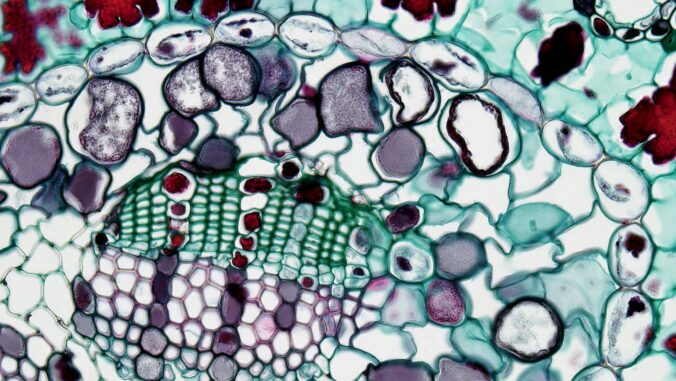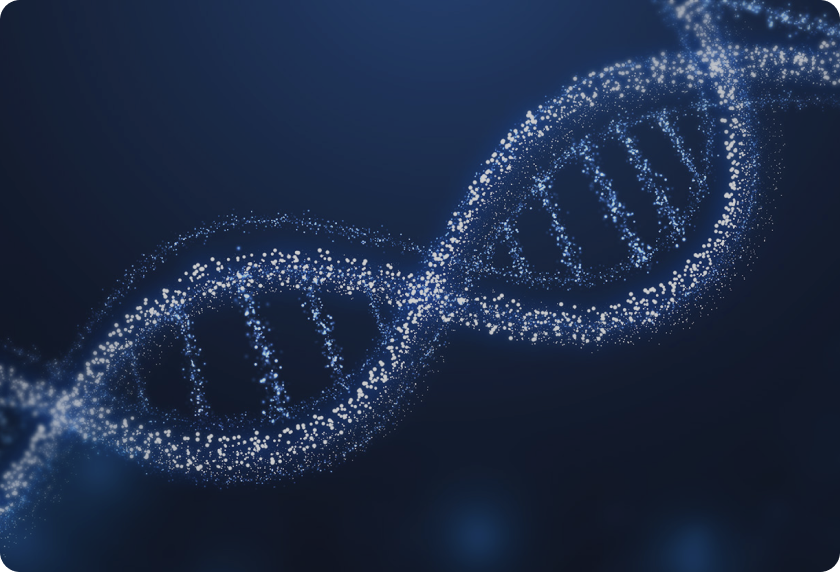My NAD+ Story: After Three Months, I Feel 30 Years Younger!
Breakthrough formula restores health and vitality on the cellular level
You may not be aware of this, but a revolution in health sciences is happening, because of discoveries surrounding a compound called nicotinamide adenine dinucleotide, abbreviated as NAD+.
This molecule, as it turns out, is essential for virtually every function of human cells, and not only do we not get enough of it, but aging, stress, and poor lifestyle choices cause a depletion of NAD+ at the cellular level.
NAD+ depletion leads to a wide range of metabolic and age-related disorders, including chronic inflammation, insulin resistance, type II diabetes, cardiovascular disease, chronic fatigue, cancer, and on and on, seemingly ad infinitum.
The good news is that scientists, most notably Dr. Jin-Xiong She in Augusta, Georgia, have developed effective ways to boost intracellular levels of NAD+, thereby restoring youthful vigor and deterring a slew of adult-onset illnesses.
Now, if you’re thinking this pitch sounds too good to be true, I can hardly blame you. As a fourth grader reading about Ponce de Leon, I had to laugh at the gullible rube who was searching Florida for the Fountain of Youth.
And, as you might have read, I’m appalled by corrupt practices in modern medicine1. But when it comes to all-natural methods of improving my health, I’ll try just about anything once. So, three-plus months ago, I started taking Dr. She’s NAD+ supplement, Vitality ↑® NAD+ Booster, and am I ever happy I did!
Where did I go wrong?
A little personal background. When I was six, I suffered a nasty whiplash accident that left me with a misaligned spine and a sacrum that was ever-so-slightly out of the socket. My family’s quack doctor said to rest, and I’d been fine.
But I wasn’t fine, and he did nothing to help. As a result, I grew up with atrocious posture and sleeping problems that hampered my growth and left me chronically exhausted.
I was in fairly constant pain, which fluctuated between dull and excruciating, and I had to deal with ever-increasing metabolic health problems, which included a panoply of allergies, tinnitus, “sinus headaches,” a “nervous stomach,” hypoglycemia, and low-level asthma. I was rarely my best self, underperformed at school, lived under constant stress, and simply didn’t have the energy to pursue my life’s goals.
Now, I don’t want to paint a picture of abject misery. I’ve done a lot in my life and have known a great deal of joy and contentment.
And I feel like I’ve earned those moments. I fought for them, exploring every potential avenue to restore my health: chiropractic, Atkins’ diet, cytotoxic four-day rotation diet, nutrient supplementation, meditation, crystals, acupuncture, traditional Chinese herbs, complete abstention from sugar and alcohol, massage therapy, electrical muscle stimulation, and regular exercise.
I poured my meager earnings into expensive treatments that for a time allowed me to feel better before the exhaustion and the pain crept back in.
For the amount of exercise I put in, I should have had a chiseled physique, but I never made the progress others made, and pushing my boundaries resulted in exhaustion, inflammation, and more pain.
Chronic pain/fatigue has been my cross to bear. It’s a lighter cross than many others have endured, and for that I’m grateful.
But it nevertheless has limited my success personally and professionally.
I could recite a litany of times I ended a relationship or made a career change because I was just too tired to move forward.
When I was trying to break in as an actor, a common observation from the agents who interviewed me was, “You need to have more energy.”
As a singer, I never fully developed my voice, because the energy I lacked stunted the development of my vocal instrument.
As a writer, I’ve had a million stories bouncing around in my head that I just haven’t had the time—make that energy—to put down on paper.
So, at age 63, I perceive a huge chasm between my potential, based on an honest assessment of my talent and intelligence, and my accomplishments. Augh, so much spilt milk.
Saved from managed decline by NAD+!
The good news came about four or five months ago when my friend Greta asked if I wanted to do a little marketing writing for a product she was involved with.
At that time, I was feeling every bit of my age. I’d wake up every morning with a song in my heart, but it went something like this:
“Why does everything hurt, hurt, hurt?
Why does everything hurt, hurt, hurt?
Why does every little thing crackle and ping
When I take off my shirt?
It’s a day above dirt,
But why does everything hurt?”
Here’s a brief list of the symptoms I was struggling with:
- Asthma
- Allergies
- Brain fog
- Lethargy
- Insomnia
- Peripheral neuropathy
- Swollen feet
- Inflammation everywhere
- Sciatica and piriformis syndrome
- Shoulder impingement syndrome
- Tinnitus
- Neck pain
- Restless leg syndrome and night cramps
- Afternoon slump a la Rip Van Winkle
I dutifully exercised for an hour each day to keep these symptoms from worsening, but I was clearly managing my decline, not recovering.
So, then Greta introduced me to Dr. Jin-Xiong She, a molecular biologist who had founded Jinfiniti Precision Medicine.
Dr. She has been studying cellular functions relative to age-related diseases for decades.
His studies confirm that there is one essential nutrient that operates as a cofactor in virtually every cellular function, including the production of energy, a compound called NAD+.
People lose NAD+ with age, leading to a decline in our cells’ ability to perform, which opens the door to various maladies. Supplementing NAD+ can restore cellular performance to peak levels, so we build healthier tissues, bones, and organs.

Dr. She also confirmed through his studies that NAD+ is a difficult nutrient to supplement. Because it’s such a large molecule, it does not penetrate the gut barrier, and even if given intravenously, NAD+ is too large to pass through the vacuoles in the cell membranes.
Thus, the way to boost NAD+ levels is to supplement the precursor molecules, the building blocks of NAD+, and let them enter the cells where the organelles in the cell will use them to create NAD+.
Dr. She claims to have developed the most efficacious NAD+ supplement on the market, and after three months of taking it, I have no reason to doubt him.
Dr. She is a very data-driven scientist, so the first thing he wanted to do with me was draw some blood and measure my levels of essential biomarkers.
Not surprisingly, my NAD+ level was that of a mid-70s man.
The way I figure it, constant stress depleted my levels, and even the strict diet and exercise regimen I’ve been on for decades was not enough to replenish this vital nutrient.
I was also deficient in creatine, which could explain the muscle soreness I experienced after exercising, and I had poor biomarkers for inflammation and antioxidant levels.
Armed with this information, I started taking Dr. She’s NAD+ supplement, Vitality ↑® NAD+ Booster, along with creatine, anti-inflammatory supplements, and antioxidants.
What three months on Vitality ↑® NAD+ Booster has done

I’m now on my third jar of Vitality ↑® NAD+ Booster, and as I wrote at the beginning, I feel like I’m back in my mid-30s. Now, my mid-30s might translate to a fit individual’s early 50s, but I’ll take it, because here’s what I’m experiencing:
- Vastly improved overall energy
- Deeper sleep
- Allergies are milder
- Mental fog gone
- Better mood
- Tightness in my trapezius and neck during computer work/piano playing greatly diminished
- Tenderness in the shoulder greatly diminished
- Pain/swelling in my feet and lower legs greatly diminished
- Sciatica and piriformis pain barely noticeable
- Greater flexibility, greater ability to stretch muscles and hold deep stretches longer
- Hardly any muscle soreness after exercise
- Easier, quicker workouts
- Singing is easier with better airflow, greater range, and more power
This is after only three months. Dr. She says he’s been taking Vitality ↑® NAD+ Booster for two years and is still discovering new benefits.
Is NAD+ a real hope for humanity?
In my research, I’ve found that NAD+ optimization is proven or suspected to be beneficial for an incredible number of conditions related to faulty metabolism, genetic mutations, poor neural signaling, and aging, such as:
- Addiction
- Age-related macular degeneration
- Allergies and asthma
- Alzheimer’s and Parkinson’s diseases
- Autism
- Cancer
- Cardiovascular disease
- Chronic fatigue syndrome
- Depression
- Female infertility
- Insomnia
- Low libido
- Obesity
- PTSD
- Type II diabetes and insulin resistance
Now here’s where I offer my disclaimer. Because of my own experience, the mounting hard scientific evidence, and enthusiastic anecdotal testimony, I am sold on Vitality ↑® NAD+ Booster and am excited to share what I know with anyone who could benefit.
So, I asked Dr. She to make me an affiliate marketer for Jinfiniti Precision Medicine.
I think what Dr. She has accomplished is amazing, and the word has to get out to the public. Just thinking about all the unhealthy, suffering people in this country who could benefit and turn their lives around…it makes my head spin.
Get started on NAD+ today and start feeling younger!

So, I invite you, dear reader, to explore Jinfiniti Precision Medicine and make it your source for NAD+ supplementation. If you decide to make a purchase, enter the offer code kevinrush20 for a 20 percent discount off your first purchase, and 10 percent off every subsequent purchase.
If you are suffering from any sort of systemic illness, you need to give your system the fuel it needs to fight back. And if you’re feeling the decline that comes with age, NAD+ can help you turn back the clock and get a youthful spring back in your step.
I’ll continue to keep you updated on this blog about my progress and any new NAD+ discoveries. Until then, good luck and good health!
Update: Get started with NAD+ for only $28!
Vitality ↑® NAD+ Booster has never been more cost-effective than now, because Dr. She is offering an introductory, one-month supply for only $28 dollars with a monthly subscription. That’s a savings of 76 percent, and you can cancel the subscription any time, if you’re not thrilled with the results. Just follow this link: Start for $28!
If you routinely struggle to get a good night’s sleep, you know how insomnia is undermining your health. Do yourself a tremendous favor and order Vitality ↑® NAD+ Booster today. You’ll be very happy you did.
Kevin Rush is an award-winning playwright and screenwriter. He’s the author of three novels, including The Lance and the Veil, an adventure in the time of Christ (which Kirkus Reviews calls “a big, bold Biblical saga to fire the Christian imagination”) and The Wedding Routine, (hailed by Online Book Club as a 4/4 Star romantic comedy delivering “nothing but comic gold”). Learn more at www.kevinrush.us.

















































